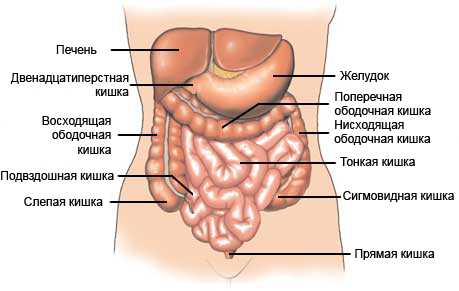Angiodysplasia of the intestine
Description angiodisplazii bowel syndrome
Angiodisplaziâ colon occurs when increasing the number of blood vessels in it, and as a result of accidental hemorrhage of the gastrointestinal tract (GI). When the disease is suspected, you should immediately consult a doctor.
Causes of intestinal angiodisplazii
Angiodisplaziû of the bowel may cause:
- Damage to the gastrointestinal tract;
- Problems with heart;
- Kidney problems;
- Lung problems;
- Von Willebrand Disease (violation of blood);
- The problem of blood vessels;
- Normal colon reduction.

Risk factors
Factors, that increase the likelihood of intestinal angiodisplazii:
- Age: senior 60 years.
Symptoms of intestinal angiodisplazii
Disease angiodisplaziej bowel syndrome symptoms may be absent. These symptoms can also be caused by other diseases. You must inform your doctor, if they came any.
- Bleeding from the rectum;
- Anemia;
- Weakness;
- Fatigue;
- Breathlessness;
- Dark, tarry stools.
Diagnosis of intestinal angiodisplazii
The doctor asks about the symptoms and medical history, and performs a physical exam. Tests may include:
- Colonoscopy – a thin tube (endoscope) Enter through the rectum to examine the cover of the large intestine;
- Upper endoscopy – a thin tube is injected through the mouth into the esophagus, the stomach and the small intestine;
- Radiological testing using computed tomography, radiation scanning (scanning “labeled” erythrocyte), or other methods;
- Angiography – test, which implies a contrast dye into a vein, for, to see the blood vessels on the x-ray picture;
- General blood analysis – test for measuring the number of red blood cells;
- Fecal – the search is carried out for blood in the stool.
Treatment of intestinal angiodisplazii
Treatment may not be necessary, Since about 90% cases of intestinal angiodisplazii bleeding stopped yourself. Treatment options include the following:
Colonoscopy
The doctor may cauterize (perform thermal burn tissues, to stop bleeding from blood vessels) spot bleeding during a colonoscopy.
Angiography
The bleeding area during angiography may be entered thickener blood.
Medicamental therapy
Hormone therapy with estrogen may help in some cases.
Operation
Can sometimes be needed surgery to remove the affected area of the colon.
Prevention of intestinal angiodisplazii
At the moment there are no methods to prevent bowel angiodisplaziû.
